Women's Home Valenki: A Comprehensive Guide
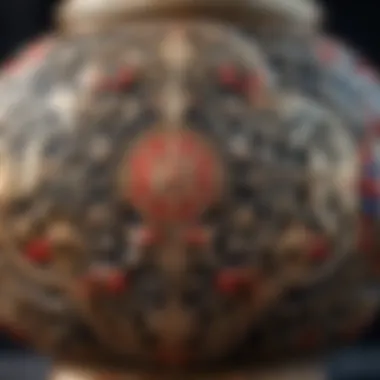

Актуальные акции и скидки
In today’s market, women's home valenki are attracting significant attention. Several retailers are offering discounts and special promotions. This makes it the right time for consumers to consider investing in these traditional footwear items, which combine cultural heritage with practicality.
Обзор текущих предложений
Various online stores and local boutiques currently provide attractive offers on women’s valenki. These deals range from seasonal discounts to exclusive online promotions. Brands such as ValenkiShop and Traditional Footwear offer competitive pricing. shoppers can find prices reduced by up to 30% during sales events. Be sure to keep an eye on these deals, especially during the holiday season or cultural festivals.
Специальные предложения от популярных брендов
Specific brands often showcase special collections or colors, enhancing the appeal of valenki. Stores like Cherepovets Vasily and Izhevsk Comfort periodically feature limited-time offers that resonate with a younger audience. Engaging directly with these brands on their social media platforms can yield information on upcoming sales or exclusive releases.
"Investing in traditional footwear not only provides functional benefits but also promotes cultural appreciation."
Рекомендуемые товары
For those ready to purchase, it is crucial to know which products stand out in terms of value and quality. Here’s a selection of recommended valenki currently available at discounted prices.
Топ товаров со скидками
- ValenkiShop Classic Gray: Timeless gray valenki, perfect for home use. They offer comfort and warmth.
- Izhevsk Comfort Women's Black Valenki: Stylish and versatile, suitable for both casual and dressy outfits.
- Cherepovets Vasily Handcrafted Valenki: Unique designs that reflect rich Russian craftsmanship. Limited stock available.
Товары, которые стоит купить по сниженной цене
- Colorful Varieties from ValenkiShop: Bright colors that add vibrancy while providing comfort. At a reduced price, these are an excellent choice for families with children.
- Modern Designs from Traditional Footwear: These are perfect for the fashion-conscious consumer looking for footwear that doesn't compromise on culture.
Intro to Valenki
Valenki, a traditional Russian footwear, hold an essential place in the landscape of cultural apparel. This section aims to introduce the reader to the significance of valenki, emphasizing their role in both historical and contemporary settings.
Valenki are not merely shoes; they represent a rich tapestry of Russian heritage. Made from felted wool, these cozy boots provide warmth during the harshest winters. Their design reflects a blend of practicality and artistry, making them a favored choice for many households. As a guide, understanding valenki will allow one to appreciate their craftsmanship and cultural relevance today.
Definition of Valenki
Valenki are a type of traditional Russian footwear crafted from felted wool. Characterized by their boot-like appearance and soft texture, valenki are highly insulated, making them ideal for cold weather. The wool used in valenki is unique, allowing for precise felting processes that create a durable and warm product. Generally, they have no hard soles, adding to their comfort but limiting their wear on rough surfaces. Traditionally, valenki are worn with socks, providing an extra layer of insulation against the cold.
Historical Significance
The history of valenki is deeply intertwined with the evolution of Russian culture and its climatic conditions. Originating as early as the 12th century, these boots were developed to meet the practical needs of the Russian populace faced with extreme winters. Initially worn by peasants, they symbolized warmth and resilience. Over time, valenki evolved, from being mere functional items to objects of art and cultural pride.
Valenki were often decorated with intricate patterns, showcasing regional styles. They became associated with rustic lifestyles, grounding their significance not only in fashion but also in everyday survival. The preservation of valenki through generations highlights their cultural heritage. Today, they are recognized beyond Russian borders, representing a unique blend of warmth and tradition that resonates with those who seek authenticity in their footwear choices.
"Valenki are not just boots; they possess stories of endurance and tradition woven into their fabric."
Understanding these rich historical contexts enhances the appreciation of valenki as more than just a practical item. For students, young professionals, and families, the exploration of valenki offers insight into Russia’s cultural history and the enduring value of traditional craftsmanship.
The Cultural Context of Valenki
Valenki, as traditional Russian footwear, carry profound cultural significance. They reflect a unique blend of functionality and artistry, illustrating how practical needs shape cultural practices. Understanding the cultural context of valenki helps us appreciate their place within Russian society and contemporary fashion.
Valenki in Russian Tradition
Valenki have a deep-rooted history in Russia, tracing back to rural communities where cold winters necessitated warm and durable footwear. Traditionally made from felted wool, valenki were designed to keep the feet warm in harsh weather. This functionality is not just practical; it is also symbolic of survival and adaptation to the environment.
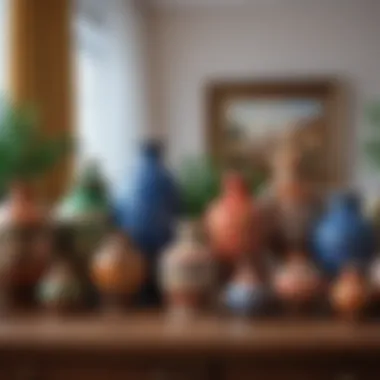

The production of valenki often involved community participation. Families would create their own pairs, passing down knowledge and techniques through generations. This practice granted each pair its own unique character, embodying the spirit of the family and local traditions. In various regions, valenki are associated with specific patterns and styles that distinguish them from one another. Their use in traditional costumes further emphasizes their cultural importance, linking them to celebrations and rituals.
Modern Interpretations
Today, valenki are experiencing a renaissance within the fashion industry. Designers are reinterpreting these classic shoes to appeal to modern consumers. This new wave includes contemporary materials, vibrant colors, and innovative designs, which expand the traditional aesthetic.
The blend of old and new retains the essence of valenki while making them relevant in today’s global market. Young fashion enthusiasts and artists often draw inspiration from these traditional boots, showcasing them in various settings and promoting a revival of interest. Moreover, with an increasing awareness of sustainable fashion, the eco-friendly aspect of woolen valenki gains attention. As a result, these shoes are more than just footwear; they become a meaningful statement of identity and a celebration of cultural heritage.
"Valenki symbolize not just warmth and protection, but also the enduring connection between people and their culture."
Materials Used in Valenki
Understanding the materials used in valenki is crucial. The type of wool and its characteristics not only determine the quality of the footwear but also its insulation and durability. The right materials also can significantly affect comfort and performance, making it essential for anyone considering valenki as a footwear option.
Types of Wool
Valenki are traditionally made from natural wool, which is known for its warmth and moisture-wicking properties. The primary types of wool include:
- Merino Wool: This is a high-quality option that offers excellent softness and insulation. It is less itchy than other types, making it more comfortable to wear.
- Sheep Wool: Regular sheep wool is common in traditional valenki. It provides great warmth but may not be as soft as Merino.
- Felted Wool: This is treated wool that has been compressed and matted. It creates a dense material that is particularly effective at retaining heat.
Each type of wool has its own pros and cons. Merino, for instance, is more expensive but offers superior comfort. On the other hand, sheep wool is more accessible and often used in more affordable valenki.
Sustainability Factors
Sustainability is increasingly becoming a central concern in fashion and footwear, and valenki are no exception. The following aspects should be considered:
- Source of Wool: Look for brands that source their wool from ethical suppliers. Sustainable farming practices help ensure that the environment is cared for, which is essential for long-term sustainability.
- Production Methods: Traditional methods of making valenki are often more sustainable than mass production techniques. Artisanal processes typically have a lower carbon footprint and support local economies.
- Longevity and Repairability: Valenki made from high-quality materials can last for many years, which is more sustainable than needing to replace cheaper options frequently. Consumers can also consider repair services to extend the lifespan of their footwear.
A focus on sustainable materials and production can not only enhance the lifetime value of valenki but also resonate with the growing consumer demand for ethical choices.
"Choosing valenki crafted from sustainable sources reflects a commitment to both tradition and the environment."
Styles of Women's Home Valenki
The styles of women's home valenki play a significant role in their functionality and aesthetic appeal. Valenki, known for their warmth and comfort, have evolved to embrace both traditional and modern design elements. A deep understanding of these styles contributes to making informed purchasing and styling choices, which is essential for consumers considering valenki as a footwear option.
Traditional Styles
Traditional styles of women's valenki are rooted in centuries-old craftsmanship. These valenki are often made with thick, soft wool that provides excellent insulation. They typically feature simple, classic designs that emphasize functionality over fashion.
Key characteristics of traditional valenki include their tall silhouette, often reaching mid-calf or higher, which is instrumental in keeping the legs warm in cold weather. Most traditional valenki are unadorned, reflecting the utilitarian aspect of their origin. However, some are embellished with intricate stitching or felt appliqués, which add to their uniqueness without compromising style.
These styles are particularly popular among those who appreciate the heritage of Russian footwear. Traditional valenki can easily be paired with a variety of outfits, making them versatile for home wear.
Benefits of Traditional Styles:
- Warmth: The dense wool material ensures excellent thermal insulation.
- Durability: Well-crafted traditional valenki can last for many seasons, making them a good investment.
- Cultural Significance: Wearing traditional styles connects the wearer with Russian heritage.
Contemporary Fashion Trends
As fashion evolves, valenki have found new expressions in contemporary styles. Designers are reinterpreting valenki to suit modern sensibilities while keeping their original features intact. The modern version often embraces bold colors, unique textures, and innovative patterns. Some contemporary valenki even incorporate zippers or buttons for added convenience.
This adaptive approach allows valenki to cater to a younger audience seeking trendy yet comfortable footwear. They may feature various elements such as color-blocking, geometric designs, or playful prints, appealing to fashion-forward consumers. It is common to see these designs showcased in urban settings, highlighting their transition from traditional home wear to fashionable outdoor footwear.
Features of Contemporary Styles:
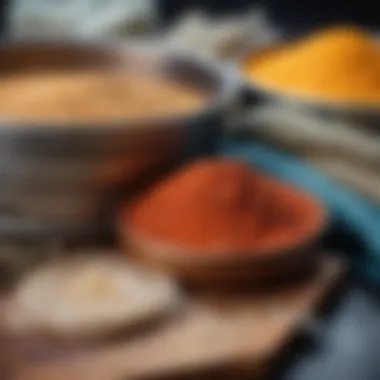

- Creative Designs: Emphasis on patterns and textures can make valenki a statement piece.
- Hybrid Functionality: Some contemporary valenki blend traditional warmth with modern accessibility.
- Wider Acceptance: They fit seamlessly into casual and streetwear styles.
Color and Design Variations
The color and design variations found in women’s home valenki reflect personal style and preferences. While traditional styles usually stick to muted tones like gray, black, or beige, contemporary valenki embrace a wider spectrum of colors.
Bright reds, blues, greens, and pastels are frequently seen, allowing for thematic matching with outfits. These choices reinforce the idea that valenki can be more than just practical.
Design variations often involve unique stitching patterns or fabric blends, which can enhance the visual appeal of the footwear. For those looking to express individuality, personalized valenki with custom colors or designs are becoming increasingly popular.
Notable Aspects of Color and Design Variations:
- Personal Expression: Choices in color and design allow wearers to convey their unique personality.
- Seasonal Trends: Color variations can align with current fashion trends, adding relevance.
- Cultural Integrations: Designs may be influenced by local cultures, making each pair unique.
Purchasing Considerations
When considering to purchase women's home valenki, individuals must weigh numerous factors that influence both the quality and utility of the product. Valenki are not just a functional footwear option; they symbolize a rich cultural heritage. Understanding these purchasing considerations can enhance the overall experience and satisfaction of owning this traditional item. Factors such as where to buy, price ranges, quality indicators, and proper fitting can drastically affect usage and longevity, making this section crucial for consumers who value quality and functionality.
Where to Buy Valenki
Finding the right place to buy valenki is essential for ensuring authenticity and quality. Moreover, buying from reputable sources can provide additional benefits like customer support and return policies. Valenki can usually be found in several types of outlets:
- Specialty Stores: Shops that focus on Russian or Eastern European products often carry a broad selection of authentic valenki. Check local directories or online listings.
- Online Retailers: Websites such as Amazon and niche online boutiques specialize in traditional crafts, making them convenient options for broader selections.
- Craft Fairs: Local artisan markets sometimes feature handcrafted valenki, which can offer unique styles and direct purchases from makers.
- Cultural Centers: Eastern European cultural centers occasionally sell traditional goods, including valenki, during events or festivals.
Price Range and Quality Indicators
The price of valenki varies widely depending on factors like materials used and craftsmanship. Generally, you can expect prices to fall within a range of $50 to $300. A few indicators of quality include:
- Material: Authentic valenki are made from high-quality wool. Check the label for material specifications.
- Craftsmanship: Inspect the stitching and overall finish. Handcrafted items tend to be more durable and unique.
- Brand Reputation: Research brands known for producing quality valenki. Older, established brands often have better reviews and reliability.
- Reviews: Reading customer feedback can provide insights into the real-world performance and quality of the product.
Size and Fit Guidelines
Fitting is critical for comfort and insulation. Valenki come in various sizes, and it's advisable to follow the brand’s sizing chart. Keep in mind:
- Try Before You Buy: If purchasing in a store, trying them on is beneficial. Ensure there is room for movement but avoid overly loose fits.
- Sizing Charts: When buying online, consult the sizing chart carefully. Each brand might have different sizing standards.
- Socks Consideration: Plan to wear thicker socks with valenki for optimum warmth, which may influence size choices.
"Proper fit not only enhances comfort but also maximizes the insulative properties of valenki, making your experience better overall."
In summary, careful consideration during the purchasing phase of women's home valenki will lead to a more informed decision, saving time and money in the long run. It's a step that contributes significantly to the appreciation of these traditional footwear items.
Caring for Women's Valenki
Caring for women's valenki is an essential part of maintaining their charm and functionality. As these traditional Russian felt boots have deep cultural roots, preserving them ensures that their significance is not lost over time. Proper care contributes to their longevity, allowing individuals to enjoy the warmth and comfort valenki provide for many years. Furthermore, understanding cleaning and storage recommendations helps users minimize wear and tear, enhancing the overall experience of wearing and owning this unique footwear.
Cleaning Techniques
Cleaning women's valenki requires a gentle approach to avoid damaging the wool fabric. Here are several suggested techniques to maintain their cleanliness:
- Regular Brushing: Use a soft bristle brush to remove dirt and dust. Brush in one direction to lift dirt without matting the fibers.
- Spot Cleaning: For specific stains, lightly dampen a cloth with water and mild soap. Gently dab the stained area. Avoid saturating the wool, as excess moisture can cause deformity.
- Drying: If the valenki become wet, it is crucial to let them dry naturally. Place them in a well-ventilated area away from direct sunlight and heat sources to prevent shrinkage or warping.
- Professional Cleaning: For deep cleaning, consider taking valenki to a specialized cleaner who understands their unique fabric needs. This ensures thorough cleaning without harming the material.
Proper cleaning techniques are vital for maintaining the integrity and appearance of valenki over time.
Storage Recommendations


Storing women's valenki correctly is just as important as cleaning. To preserve their shape and quality, follow these storage recommendations:
- Choose the Right Location: Store valenki in a cool, dry place. Avoid damp areas to prevent mold growth.
- Use Shoe Trees: To maintain their structure, consider using shoe trees or stuffing them with paper to keep the shape intact during storage.
- Avoid Compression: Do not pile valenki on top of each other. This can cause creases and distort their shape.
- Protect from Pests: Keep them in a sealed container or use mothballs to protect against insects, which can damage the wool.
By following these care instructions, owners can ensure their women's valenki remain beautiful and functional, reflecting their rich heritage and providing comfort for many winters to come.
Comparison with Other Footwear
When considering women's home valenki, it is essential to understand how they compare with other types of footwear. This section addresses significant contrasts in design, functionality, and comfort aspects that influence consumer choices. Valenki, with their unique construction and materials, offer distinct advantages over conventional boots, particularly in cold climates.
Valenki vs. Boots
Valenki and boots serve similar purposes in protecting feet, but their designs reflect different cultural and functional needs.
- Material Composition: Valenki are traditionally made from felted wool, providing excellent insulation. In contrast, boots can be made from various materials, including leather, synthetic fabrics, or rubber, which may or may not prioritize warmth.
- Breathability: Valenki provide superior breathability due to wool's natural properties. This characteristic helps to regulate temperature, keeping feet warm without overheating. Meanwhile, many boots can create a stifling environment due to non-breathable materials.
- Flexibility and Shape: Unlike rigid boots, valenki mold to the foot's shape over time. This adaptability enhances comfort, especially for extended wear. Boots sometimes lack this feature, potentially leading to discomfort if not properly fitted.
- Design Variability: While boots come in numerous designs, valenki often emphasize simplicity and functionality. Icons of Russian culture, valenki showcase traditional patterns and styles that are aesthetically unique but may not always align with contemporary fashion trends.
Understanding these differences can help consumers select the appropriate footwear based on their needs, lifestyle, and environmental conditions.
Comfort and Insulation Properties
One of the critical benefits of valenki lies in their comfort and insulation properties. Their wool composition serves as a natural insulator, making them an ideal choice for cold weather.
- Thermal Insulation: Wool fibers trap air, which helps maintain warmth. Valenki effectively keep feet warm in frigid conditions while remaining lightweight. This insulation makes them particularly suitable for leisurely indoor wear or quick outdoor activities in winter.
- Cushioning Effect: The felted wool provides a natural cushioning effect, reducing the impact on feet. This cushioning can lessen fatigue, allowing for prolonged wear without discomfort.
- Adaptability: As mentioned before, valenki adapt to each wearer's foot. This adaptability builds a custom fit, enhancing overall comfort.
"Choosing footwear like valenki can significantly impact overall foot health, particularly in colder climates. Their design prioritizes both comfort and warmth, making them a smart choice for winter use."
Valenki in Popular Culture
Valenki, the traditional Russian felt boots, hold an intriguing position not just as functional footwear but also as cultural symbols. Their representation in various media reflects deeper societal values and historical contexts, thereby enriching our understanding of Russian culture. This section will delve into how valenki have been portrayed in media and their influence on contemporary fashion design, showcasing their relevance beyond mere utility.
Representation in Media
Valenki have made appearances in numerous artistic expressions, including films, literature, and visual art. They often symbolize Russian heritage and identity. In films, characters wearing valenki may be depicted in rural settings, emphasizing connection to tradition and nature. For example, popular films such as "Moscow Does Not Believe in Tears" feature scenes where characters are seen donning these boots, reflecting both practicality during winter and cultural pride.
In literature, valenki appear as reminders of a simpler life. Writers like Anton Chekhov reference them in their works, highlighting the boots not only as footwear but as emblems of the Russian spirit. This kind of representation plays a crucial role in elevating valenki beyond basic home wear, transforming them into icons deeply rooted in Russian culture.
Furthermore, contemporary social media has seen valenki emerge within modern narratives. Platforms like Instagram showcase them in fashion contexts, connecting older traditions with modern lifestyles.
Influence on Fashion Design
In recent years, valenki's influence on fashion design has become more pronounced. Designers have embraced the unique materials and craftsmanship of valenki to create modern interpretations. High-end fashion brands often incorporate elements inspired by valenki, blending traditional designs with contemporary trends. People globally recognize the aesthetic and symbolic value of these boots, making them desirable fashion statements.
The integration of valenki into fashion goes beyond aesthetics. These designs often bring attention to sustainable practices, as many designers are increasingly focused on eco-friendly materials. Valenki’s natural wool components align well with this trend, making them attractive for environmentally conscious consumers.
Valenki symbolize a meeting point between tradition and modern fashion, showcasing how heritage can influence contemporary style.
The growing interest in valenki within the fashion industry underscores their cultural significance. They serve not only as clothing items but also as carriers of history and tradition. For today’s audience, wearing valenki can be a conscious choice reflecting both style and cultural appreciation.
Closure
The conclusion of this comprehensive guide serves as a pivotal moment to reflect on the enduring allure of women's home valenki. These traditional footwear items are not merely artifacts of the past; they represent a blend of history, culture, and functionality that resonates with modern consumers. Valenki embody comfort and simplicity, features that make them appealing in contemporary settings. Their unique properties offer a solution for those seeking warmth and style during colder months.
The Enduring Appeal of Valenki
The appeal of valenki is multifaceted. Firstly, their historical significance provides a connection to generations past. Learning about this connection can deepen appreciation and foster a respect for tradition, especially among students, young specialists, and families. Secondly, valenki's practical advantages, such as natural insulation and breathability, make them suitable for various occasions, from lounging at home to outings in chilly weather.
Valenki can often be seen as a sustainable choice in today’s fast-fashion culture. They are often crafted from natural materials, making them a more eco-friendly option compared to synthetic footwear. Their longevity also means that with proper care, they can last for many years.
Moreover, valenki adapt to modern trends while retaining their essential characteristics. Designers incorporate contemporary styles and colors without compromising their identity, allowing consumers to express their personal style. This balance of tradition and modernity is crucial to their lasting popularity.
In summary, women’s home valenki offer a unique blend of heritage and practicality. Understanding their significance, benefits, and evolving designs enables consumers to make informed choices. The rich history and cultural context of valenki provide depth that goes beyond mere fashion, making them a smart and thoughtful addition to any wardrobe.
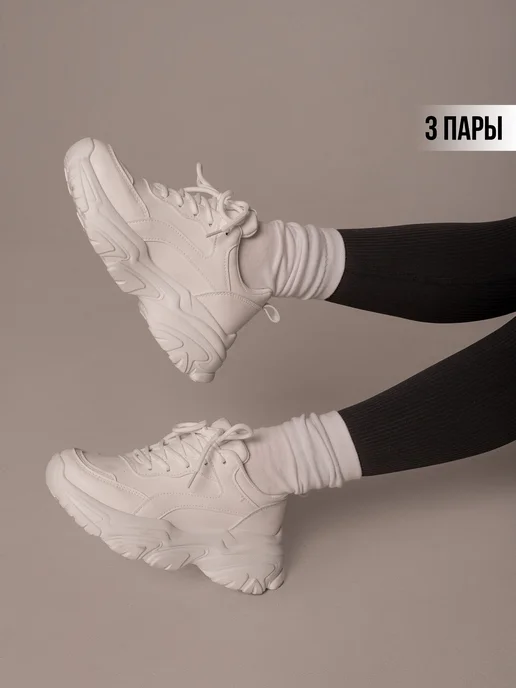
Носки женские высокие комплект из 3 пар

Подводка гибкая для воды Mateu 1/2 ВР(г) x 1/2 ВР(г) 80 см (701080005/THP/678550)

Набор расчесок массажных для волос

Гольфы капроновые
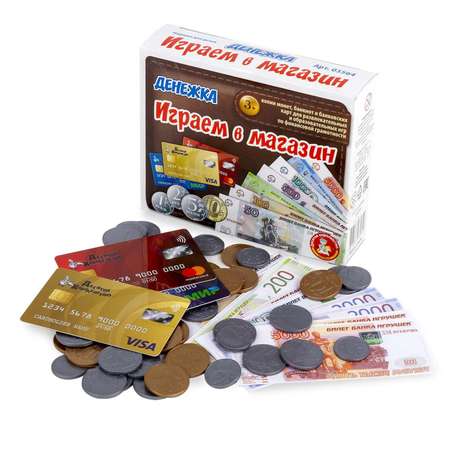
Настольная игра Sima-Land

Кисть косметическая для маски масок и пилинга

Палка кофейного дерева XS




